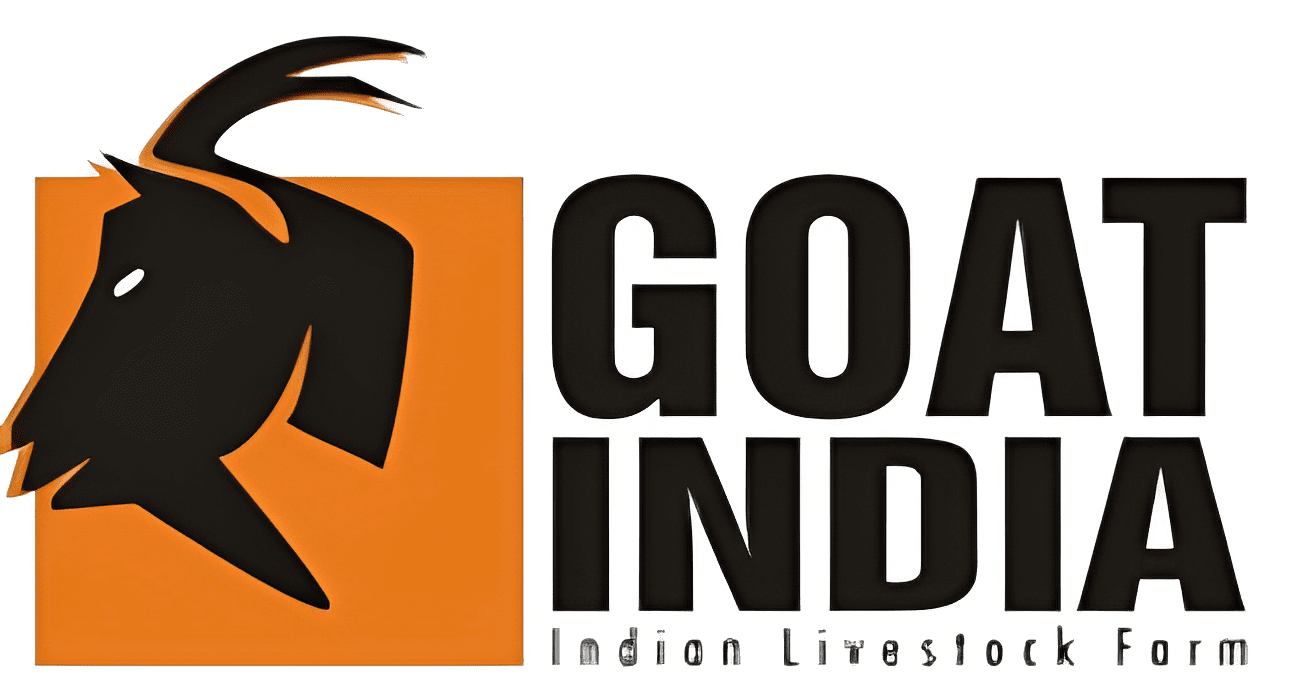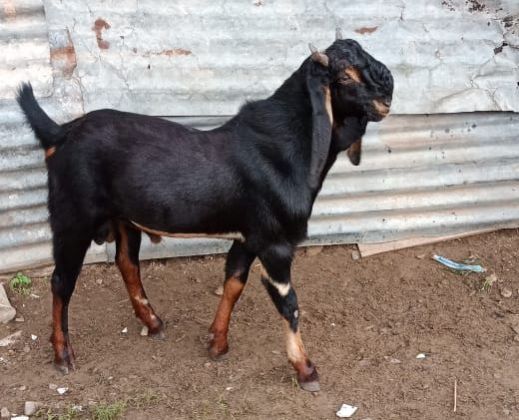Kota Karoli Goat
Discover India’s premier dual-purpose goat breed from Rajasthan and Gujarat, renowned for exceptional milk production, quality meat, and valuable skin production in dairy farming operations.
Kota Karoli Performance Statistics
Verified production data and breed characteristics for informed farming decisions
Comprehensive Breed Information
Detailed insights into Kota Karoli goat characteristics, production capabilities, and farming practices
Origin & Distribution
Kota goats, also known as Karoli goats, are primarily found in Rajasthan and Gujarat states of India. This breed is comparable to the Beetal goat in terms of size and characteristics, making it a popular choice for dairy farming operations.
Physical Appearance
Kota goats are generally tall and stocky animals with a predominantly black coat featuring distinctive white markings on ears and nose. Occasional variations include white, brown, or speckled coat colors, providing some diversity within the breed.
Body Features
These goats have short, coarse hair covering their entire body, with annual hair growth of approximately 2 centimeters. The large, flat, drooping ears measure 24-25 centimeters in length, characteristic of dairy goat breeds.
Horn Structure
Both male and female Kota goats possess horns that are bent upward and backward. The horns are well-developed and prominent, contributing to the breed’s distinctive appearance and recognition among farmers.
Breed Recognition & Purpose
Kota Karoli goats are bred primarily for milk, meat, and skin production. While considered a dual-purpose breed, they are most valued as dairy goats due to their consistent milk production. The tanning industry places special premium on Kota goat skin quality, making it an additional income source for farmers.
Milk Production
Mature Kota does produce an average of 2 kilograms of milk daily during peak lactation. The lactation period extends for 110-120 days, making this breed highly suitable for commercial dairy operations and household milk requirements.
Weight Performance
Mature Kota goats can reach weights up to 55 kilograms under proper nutrition and management. This substantial body weight contributes to both milk production capacity and meat yield potential for farming operations.
Reproductive Efficiency
The breed reaches sexual maturity and first kidding at an average age of 18 months. Approximately 40% of births result in twins, though single births are more common, contributing to the breed’s reproductive success.
Feed Conversion
Kota goats demonstrate high Feed Conversion Ratio (FCR), efficiently converting various feed types into milk and meat production. They are particularly well-adapted for stall feeding management systems.
Feeding Adaptability
Kota goats can be successfully fed with jack leaves and coconut oil cakes to support weight gain. They thrive on various fodder types including alfalfa hay, CO-3, CO-4, corn silage, pellets, legumes, and green grasses, all beneficial for development and milk production enhancement.
Feeding Management
As ruminants, Kota goats thrive on high-fiber diets and can obtain necessary nutrients from high-quality hay or pasture grass. Supplement with concentrated feed containing protein, vitamins, and minerals for optimal production.
Housing Requirements
Kota goats are highly adapted for stall feeding systems. Construct well-ventilated goat sheds with adequate space, proper drainage, clean water access, and comfortable feeding arrangements for optimal herd management.
Health Management
Regular vaccination against common diseases is essential. Consult veterinarians for appropriate immunization schedules and maintain consistent health monitoring to prevent disease outbreaks in the herd.
Breeding Management
Select quality male goats and excellent reproductive female goats for breeding programs. Provide nutrient-rich feed to pregnant does and kids to ensure healthy development and optimal production performance.
Professional Consultation
Before starting commercial Kota goat farming operations, develop comprehensive business strategies and consult with veterinary professionals. Visit established farms to learn practical management techniques and gain hands-on experience with breed-specific care requirements.
Geographic Distribution
Kota Karoli goats are well-adapted to the semi-arid climatic conditions of Rajasthan and Gujarat. They demonstrate excellent tolerance to the hot, dry climate typical of these regions and perform well in traditional farming systems.
Climate Tolerance
The breed shows remarkable adaptation to varying temperature conditions and can withstand both extreme heat and moderate cold periods. Their coat characteristics provide adequate protection against environmental stressors.
Grazing Behavior
While highly suitable for stall feeding, Kota goats also adapt well to semi-intensive grazing systems. They efficiently utilize available vegetation and can thrive on locally available feed resources when properly managed.
Water Requirements
Maintain constant supply of potable water for optimal health and production. Kota goats require adequate hydration especially during lactation periods and hot weather conditions to maintain milk production levels.
Regional Suitability
Kota Karoli goats are particularly well-suited for dairy farming in arid and semi-arid regions of Western India. Their adaptation to local climate conditions, combined with good milk production capabilities, makes them an excellent choice for farmers in Rajasthan, Gujarat, and similar climatic zones.
Essential Farming Knowledge
Practical information and best practices for successful Kota Karoli goat farming
Farm Planning
Plan everything from beginning to conclusion before starting a goat farm. Choose accessible land and water resources within financial means. Start with appropriate goat populations and invest in animals from reputable breeders.
Infrastructure Development
Construct well-designed goat sheds with proper ventilation, drainage, and protection from weather. Build secure fencing to contain goats and protect infrastructure. Ensure adequate space for feeding, resting, and movement.
Nutrition Management
Goats require high-quality feed and supplements for optimal health and productivity. Feed intake should increase proportionally with growth rate and weight gain for lactating does, pregnant goats, and growing kids.
Health Monitoring
Regular veterinary checks are essential for herd health. Maintain vaccination schedules, monitor for disease symptoms, and implement preventive health measures. Always consult qualified veterinarians for health-related decisions.
Breed Comparison Data
Comparative analysis of Kota Karoli goats with other popular Indian breeds
| Characteristics | Kota Karoli | Beetal | Jamunapari |
|---|---|---|---|
| Adult Weight (kg) | 50-55 | 50-65 | 65-90 |
| Daily Milk Yield (kg) | 2.0 | 2-3 | 2.5-3.5 |
| Lactation Period (days) | 110-120 | 180-210 | 200-250 |
| Age at First Kidding (months) | 18 | 15-18 | 20-24 |
| Twin Birth Rate (%) | 40 | 45 | 35 |
Start Your Kota Karoli Goat Farming Journey
Empower your farming success with proven techniques and expert guidance


